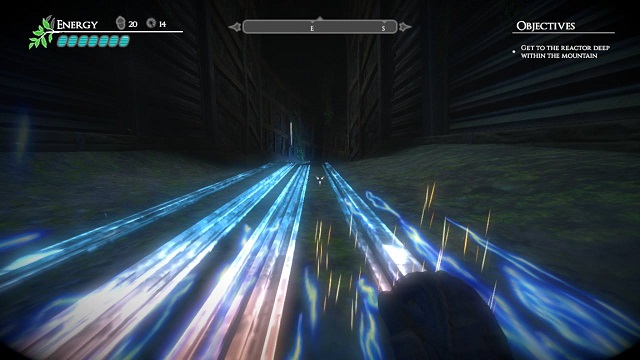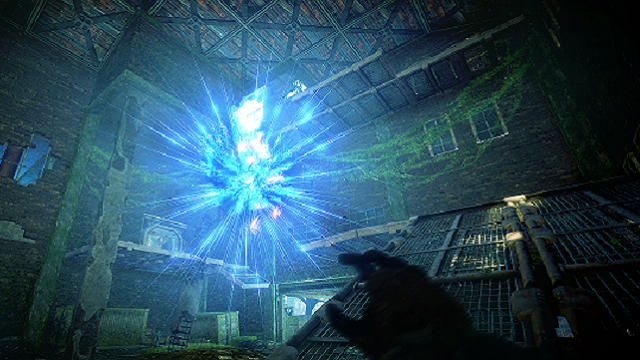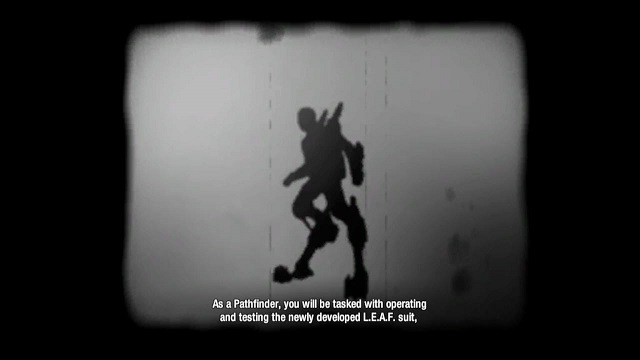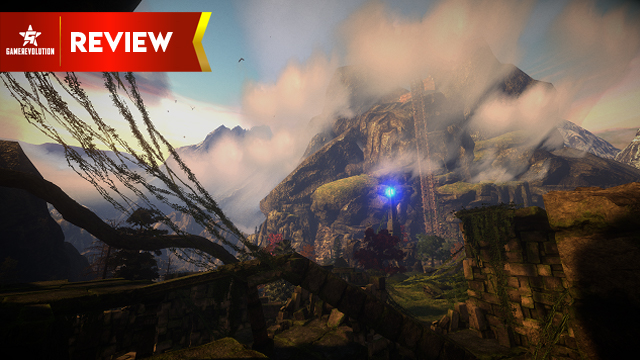Over the course of this generation, we’ve seen plenty of new genres thrive. From the rise and fall of MOBAs to the Destiny-style loot shooter, fads come and go. Developers mine whatever is popular, trying to uncover what’s unique about their crack at the flavor of the month. It makes sense, games that go with the trends get more attention, even if they end up as failures. There are other trends that go under the radar as well, waiting for a breakout moment that just might never come. One such trend stems from Valve’s Portal duology. Not quite a puzzler, not quite a walking simulator, Valley brings first-person platforming to the forefront. It’s got plenty of ideas to run through, even if it misses some checkpoints along the way.
You play as an archeologist on the hunt for a seed with untold power. First discovered in the 1940s and coveted for what it could bring to the war effort, the stories went cold after the bomb dropped. After washing ashore, you discover a verdant valley filled with strange neon creatures and floating energy orbs. You also uncover a military mech suit designed to make soldiers leap high in the air and descend from the skies. Once you strap it on, you also discover that it can revive dead wildlife using the valley’s mysterious energy. Determined to find out what happened all those years ago, you leap forward into the mystery.
Valley Review | Riding the rails

As you might be able to tell from that plot summary, Valley has a lot going on. Not just in its storytelling, but also in its game mechanics. This is a project full of ambition on a scale probably beyond what Blue Isle Studios could accomplish. Each level plays like an insert from a longer game, switching from one mechanical focus to the next without ever really making up its mind. Is Valley a game about exploring a verdant wildland or spelunking through ancient facilities? Is it better to run like Sonic through a set of tunnels or swing around like Donkey Kong? It’s kind of all of those things and more, for better and for worse.
What I can say for sure is that Valley nails most anything it tries its hand at. The controls are a little squirrely at first, but that fades away as soon as you get your mechanical legs and start leaping around. You’ll gain powers like a double jump and speed boosts that let you navigate as you see fit. The level design is often clever, with a few high-speed moments that feel ripped right out of Aperture Labs. The feeling of dashing across a large field and keeping up with jackrabbits is enough on its own to justify giving Valley a try.
Valley Review | Energy crisis

The only stumbling block in its gameplay is when Valley tries to introduce combat. There are a few energy creatures that attack you as you explore, and you need to overload them to halt their strikes. This back and forth is functional, but it doesn’t mesh with anything else in these levels. It just serves to slow you down, and it’s one of the only challenging parts in an otherwise breezy campaign. The running and jumping are so good that I didn’t really need the challenge, so it drags things down as it tries to mix things up.
Of course, the combat could also be serving to try desperately to slow players down. One of the reasons that Valley feels so breezy is that it only lasts three or four hours. To its credit, you get a complete story and a full progression of powers during that time, but everything feels rushed. You get maybe two or three examples of every neat trick before you’re on to the next thing. There’s barely any time for things to coalesce into a satisfying whole. You can go back through with all your powers to discover a few hidden areas the second time through, but there’s nothing of note in these bonus bits unless you’re a completionist.
Valley Review | Like so much pulp

You certainly won’t care about experiencing the story a second time. While there is a sincere effort on display, the entire narrative feels pretty hokey and not all that memorable. There’s an angelic female reporter uncovering secrets and a devilish scientist gone mad. Science threatens nature, the world is at stake, you might as well just watch FernGully. I do enjoy how odd it is that your protagonist is coming to this entire tale decades after it played out. They are as much a voyeur as you, reacting to forces that have all presumably passed on. It makes everything that happens pretty superfluous, but it does give the whole story a weird vibe that’s worth revisiting.
Originally releasing in 2016, Valley recently made the jump to Switch. While its short length and level variety make it appealing as a handheld experience, the power of the Switch leaves this edition of the game lacking. On other platforms, one of the big selling points of Valley is in its visuals. It’s in the name, you’re going in wanting to investigate this location to its fullest. The power dip in Nintendo’s platform leaves you with murky visuals and a world much less exciting to explore. The gameplay keeps up, so Valley on Switch is playable, but it’s just not the ideal way to blow through this campaign.
Valley Review | A circus of values

Much like Gemini: Heroes Reborn before it, Valley has a lot of great ideas that deserve to be explored in full at a later date. In another time, it might have done well as a Blockbuster exclusive. It fully engages you throughout your journey, but it’s all over before you know it. For those who can’t get enough of weird first-person treats, this will be a smorgasbord. For everyone else, it’s the perfect game to throw on for an evening’s worth of entertainment. Just don’t expect to retain much of it past your brief fling.
GameRevolution reviewed Valley on Nintendo Switch with a copy provided by the publisher.
-
A collection of weird and novel first-person mechanics
-
Great movement and platforming
-
A satisfying level of variety
-
Stereotypical, forgettable storytelling
-
Lacking graphics on the Switch
-
Short length leads to underdeveloped mechanics







